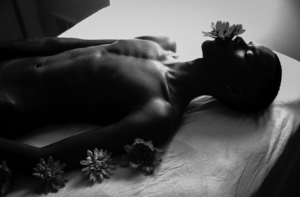Updated: Royalty and Blackness
“an occasional appearance by maria tallchief/ the native american prima ballerina close to my heart/ cuz we were not only colored by lumbee/ cherokee and blackfoot/” (shange, 52). The Native American ballerina on television showed a young Shange the multiplicity of colored people. The ballerina defied notions that racially marked individuals were no more than just one monolithic group.
In Racial Formation, Omi and Winant write that ethnicity started during the “atlantic migration,” or when european immigrants started to come to america. During this time that ethnicity was invented in the US, it did not extend to Black people and other racial minorities. On the contrary, Black people posed a problem to the concept of ethnicity because they were deemed unassimilable into whiteness. Furthermore, unlike the stark differences between irish, italian, and french people, according to whites, “all Black people look alike.” Apart from racist ideologies that put Black people into one monolith, practices of slavery also took away Black people’s ability to hold ethnicities, for the concept of ethnicity is based on decent and culture, two things which were aggressively stolen from Black people during the middle passage. (Omi and Winant, 14-20)
While ethnicity is denied to racial minorities by white society, it has yet to be wiped away within racial groups. While the freedom of multiplicity is so often denied from colored people, a young shange is drawn to the unique ethnicity of the native american ballerina. Her mom and african american dancers also help her find this multiplicity in Black people: “Thru art she said/ and sought out syvilla fort/ then when we discovered my aunt brii/ grandma had disowned/ in trinidad/ steel drums/ graced our doorway/ & i found there really were headdresses and sequins for a girl like me” (shange, 53). shange finds that her Black ancestors also have old histories of royalty, a history that usually only europeans and more recent African immigrants know of.
The image I chose shows a still Black man adorned in flowers. This image makes me think about the way specific ethnicities use materials to adorn their royal subjects after they die. I like to think that in some imagined past he was as a royal king decorated with flowers to honor his life.
Most Black people don’t have a beautiful imaginative past: the beautiful part was either destroyed during the middle passage or defiled by european imaginings of Africa. Stories that Black parents must tell their children (when their old enough to know) are stories of slavery and brutality instead of kings and queens. This denial of past must stifle any creative, therefore, I believe it must have been revelountionary for the incredibly creative shange to discover culture, heritage, and ancestry for girls like her through dance.



Comment ( 1 )